
When we think southeast asiaOne of the first places that come to mind is, without a doubt, the complex formed by the temples of Angkor in Cambodia. The largest religious complex in the world It is a place of culture and mysticism that has been seducing all visitors for years who are dropped by the Cambodian giant or a nearby country of Vietnam ideal for an extension. Are you coming with us to know the Angkor temples in Cambodia?
Brief history of the temples of Angkor
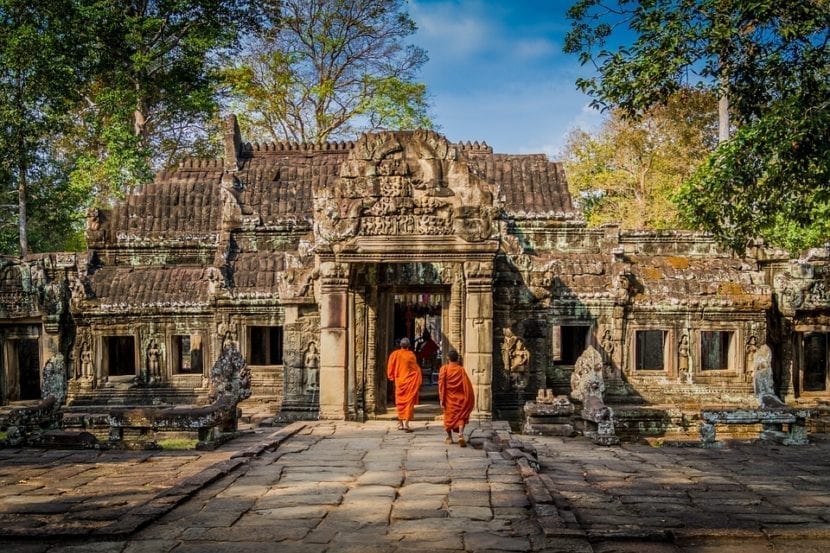
In today's Cambodia there is a region that already 2 years ago was populated by different ethnic groups. However, it would not be until the XNUMXth century AD when the king Jayavarman II, the highest leader of the Khmer empire, was in charge of redeeming all the peoples of the area creating an absolute kingdom called Devaraja (or god.temple), an ode to the worship of the monarch himself.
Jayavarman II began by building the Preah Ko temple, erected to honor the king. Years later, Javayarman I would be in charge of creating the temple None, which would be the perfect sketch of the architecture that the temples of Angkor currently wear, whose great jewel, the precious Angkor Wat, would be ordered to be built by King Yasovarman in the XNUMXth century. A time that coincided with the influence of Buddhism and Hinduism, religions that were expanded, to a large extent, by the Indian merchants who used Angkor as a place of transit and rest until the end of the rainy season.
Although the period of splendor of the Angkor temples lasted between the XNUMXth and XNUMXth centuries, the constant attacks of the Mongols from the north and the Siamese from the south led to abandon the temples in 1594, Siem Riep being the later Cambodian capital. A certainty that was never confirmed, since the temples were left at the mercy of the jungle without being conquered by the Siamese until, centuries later, a French naturalist discovered this "lost world" during an excursion in search of butterflies.
Over 900 monuments counted, angkor temples They remained abandoned for centuries, being Angkor Wat the only one that continued to be preserved and inhabited by Buddhist monks in the area to this day.
Considered the largest Hindu complex in the world and a great Cambodia country icon, the Angkor complex was designated UNESCO World Heritage Site in 1992. An architectural gem turned into one of the great claims of any adventure in Southeast Asia and especially of a Cambodian country that revolves around this place of temples conquered by ficus, smiling goddesses and some of the most beautiful sunsets in the world.
Would you like to delve into the beauty of the Angkor temples?
Visiting the temples of Angkor
The Angkor complex is one of the largest in the world, which is why visits will always depend on the time you have to visit the entire area. If in your case you want to rush a morning or day to visit the most representative area, these are the most important places in Angkor that you cannot miss:
Angkor Wat
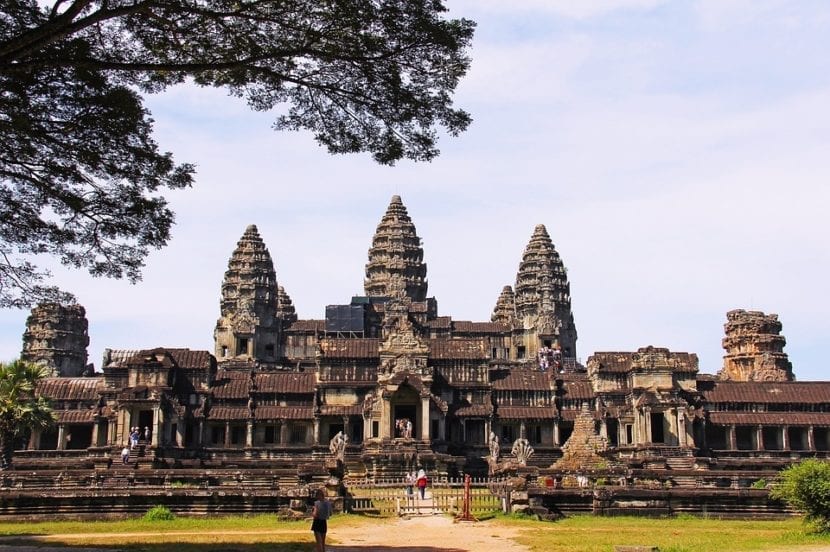
The most important and most photographed temple in Angkor It rests in the central area, located just 5.5 kilometers north of Siemp Reip, an ideal city to use as a base to get to know the region. Inspired by the Mount Meru mythology of Tibet and erected in honor of the Hindu god Vishnu, Angkor (capital in Sanskrit) Wat (temple in the same language) was immortalized by the West at the end of the XNUMXth century, becoming a central study piece for the French School of the Far East, in charge of the analysis and reconstruction of the Asian monuments of the Indochina invaded by the French. A fascinating place made up of three famous towers that invite you to get lost between passages protected by Buddhist monks, outdoor galleries invaded by the jungle or a sunset that finds here one of the best places in the world.
Bayon
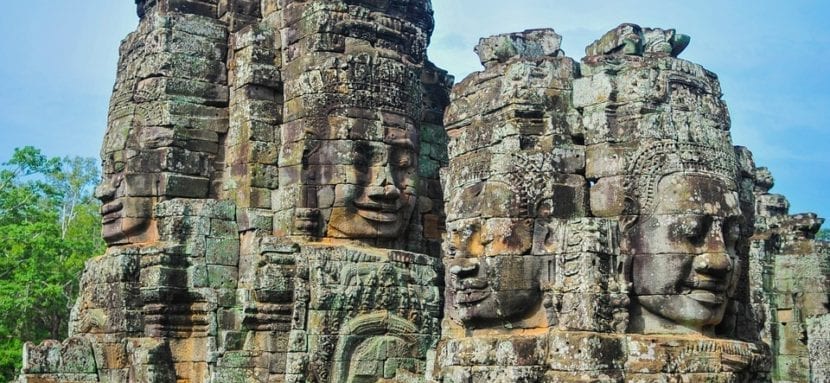
Considered as the old fortified royal city, Angkor Thom is another of the large complexes within Angkor itself with an extension of up to Sqm 9. The ideal place to enjoy the lions that cross the Phimeanakas entrance, the exotic Terrace of the Elephants but, especially, Bayón, a temple area famous for its 54 towers, among which one stands out in which Buddha appears on all four sides, or especially the up 200 smiling sculptures that are drawn by its corners.
Your Prohm
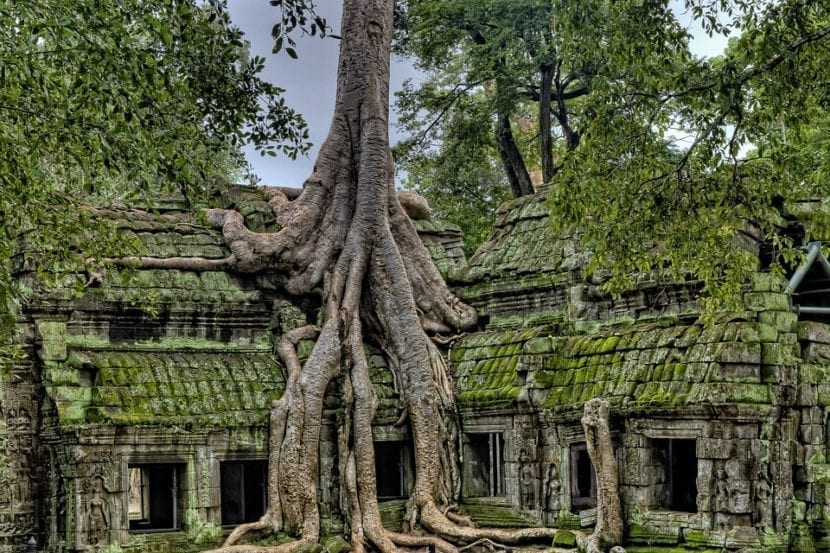
Known as the Temple of the Roots, Ta Prohm completes the trinity of Angkor, being also one of the most photographed places in the area. The reason is none other than its condition of an abandoned temple in the middle of the jungle, which led the technicians of the French School to keep it in the same state in which they found it. This results in the presence of huge fig trees running through some of the temples forming a fascinating tour.
If you have more time to visit the temple, you can opt for a route including Preah Khan, the Neal Pean, famous for its sculpted snakes, or the Temple of Women, also known as Banteasy Srei, somewhat further away from Central Angkor.
Information on visiting the temples of Angkor
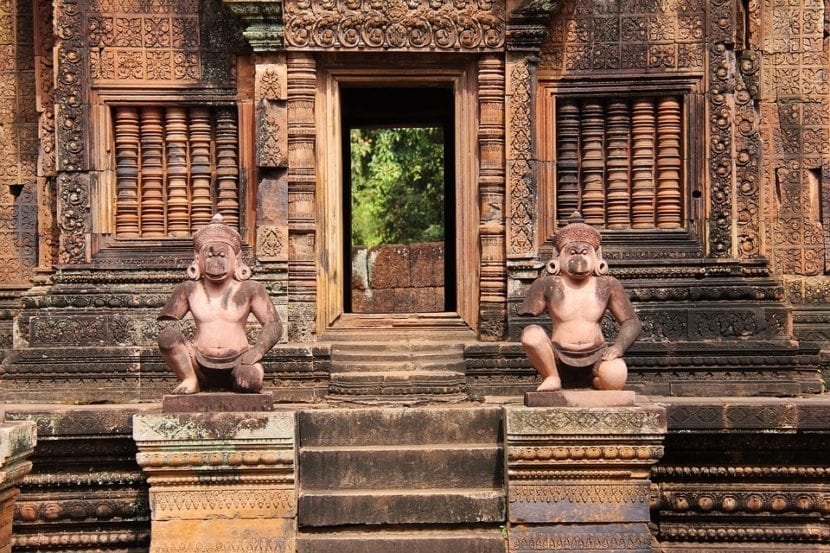
Angkor timetable It is governed by the passage of the sun, so the temples open at 5 in the morning and close at 17:00 p.m. A schedule that allows the visitor to go first thing in the morning from the nearby city of Siem Riep and enjoy the solitude of the complex to connect with the sunrise. Otherwise, sunset is always the most coveted time to take a picture.
The dress when entering Angkor should omit bare shoulders and knees, so it is recommended to go as covered as possible.
Regarding the price of the tickets, these can be purchased depending on the time you want to enjoy Angkor for different prices. The 1-day tickets cost 37 dollars, the 2 and 3 days 62 dollars while the most expensive, one week, reaches 72 dollars.
The best way to enjoy the temples of Angkor depending on the weather.
Would you like to discover this Cambodian wonder?